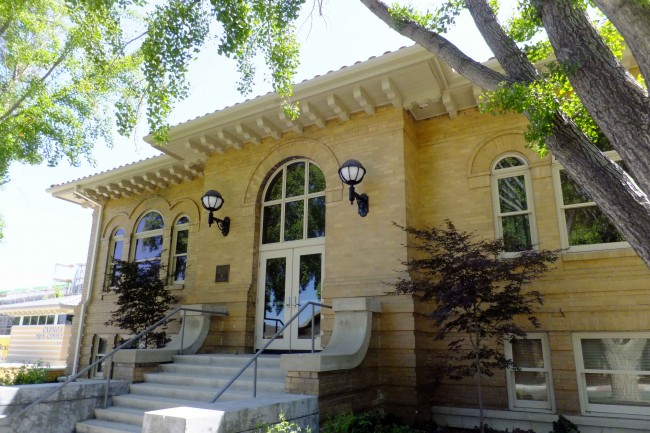Turlock Museums
Photo by adam blauert
Museums in the Valley
Although part of Stanislaus County, Turlock is only 25 miles north of Merced – closer than some other towns that are within the county. Just like Merced, the core of Turlock was laid out by the Southern Pacific Railroad as it built southwards through the Central Valley in the early 1870’s.
The town had a slow start, finally taking off after the Turlock Irrigation District built canals to provide Tuolumne River water for irrigation. Large tracts of land were bought up by land companies and subdivided as “colonies” – the “colonists” could buy the land on credit and pay off part of the loan after each year’s harvest.
History of the Central Valley
I grew interested in the town’s history after reading the following in Garden of the Sun, a history of the Central Valley written by Fresno State Professor Wallace Smith in 1939:
A pioneer wheat grower in that region asserted that the sand drifted against the stables in such high piles that pathways had to be shoveled before stock could be taken out.
The board fences used in the early days often broke from the weight of the sand piled against them by the winds surging through the passes in the Coast Range mountains.
Grasshoppers
Then came the grasshoppers. They were hatched in April, they appeared in full bib-and-tucker in May, they defoliated the vineyards and orchards in June, and only the bare peach pits, glistening like gnawed bones, were left on the trees in July.
In 1904 an indignation meeting was held at Hilmar to protest against the alleged misrepresentations of the advertisements and circulars which had been sent out to prospective colonists.... But eventually the grasshoppers were destroyed by grass fires, night fires, and hopperdozers; water demonstrated the wonderful fertility of the apparently sandy soil; and homes were erected. (2nd edition, pp. 596-597)
My great-grandfather settled in Turlock just 10 years after the time described in Smith’s history, so I grew curious about learning more.
What drew him to Turlock? What were conditions like in 1914?
The next time I drove up to Turlock I made a stop at the Turlock Historical Society’s museum.
Historic Storefront
Located in a historic storefront at 108 S. Center Street, it is open Tuesdays and Thursdays from 11AM to 3PM. Admission is free and friendly volunteers are on hand to answer questions.
For more information go to: http://turlockhistoricalsociety.org/
or call (209) 668-7386.
The museum has an interesting collection of artifacts and antiques that illustrate the town’s development, life in the previous century, and the many peoples and cultures that came from around the world to settle in this area.
In addition to what I learned from the displays, I am continuing to learn more as I read a local history that I bought while at the museum: Streams in a Thirsty Land – A History of the Turlock Region.
Carnegie Arts Center in Turlock
If you make the trip up to Turlock, make sure you also plan to visit the Carnegie Arts Center at 250 North Broadway.
Originally established as one of Andrew Carnegie’s philanthropic enterprises to spread education, the library was built in 1916.
Nearly 150 Carnegie libraries were built in California during the early 1900’s. In 1968 the books were moved to a larger building and the former library was converted into a recreation and arts center.
While being renovated and expanded in 2005 it was gutted by fire.
Overwhelming community support made possible the restoration of the building and the addition of an 18,000 square foot exhibit, classroom and office space. Regular art classes are offered for all ages, though the biggest attractions for visitors from outside the county are the frequently-changing world-class art exhibits.
Admission is $5/person and the Arts Center is open Wednesday-Sunday from 10AM to 5PM.
For more information about the Carnegie Arts Center go to http://www.carnegieartsturlock.org
or call (209) 632-5761.






Adam Blauert, a high school teacher and avid outdoors enthusiast, has dedicated the majority of his life to Merced County. His passions include fishing, backpacking, delving into local history, and exploring the wonders of the western states.